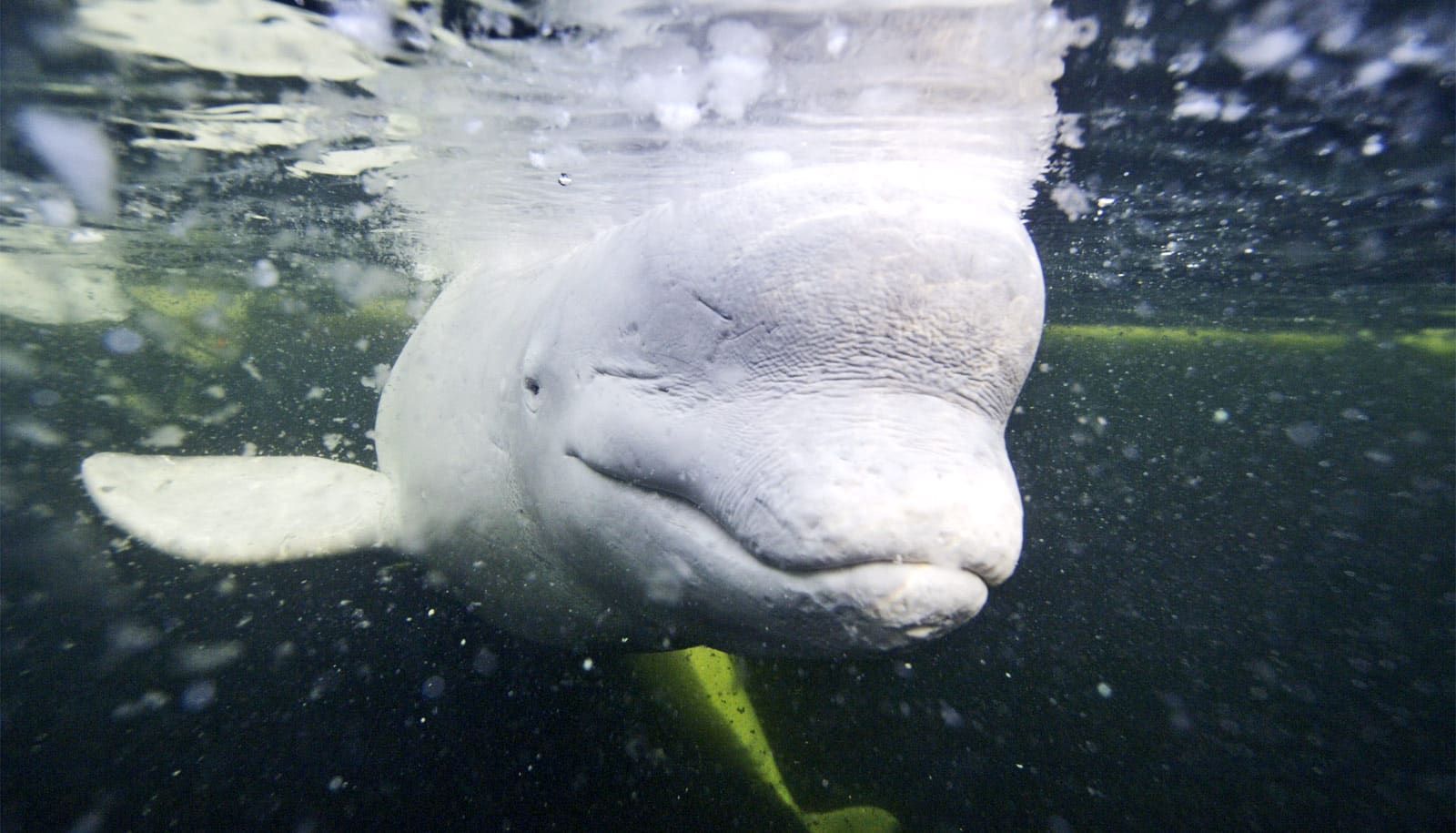Changes in Arctic sea ice are altering the annual migration of some beluga whales in Alaska, but not others.
A new study finds that as Arctic sea ice takes longer to freeze up each fall due to climate change, one population of belugas mirrors that timing and delays its migration south by up to one month. In contrast, a different beluga population, also in Alaska, that migrates and feeds in the same areas doesn’t appear to have changed its migration timing with changes in sea ice.
Migration patterns that are inherited over generations are changing within the lifespans of multiple generations of whales.
The paper appears in the journal Global Change Biology.
“The biggest take-home message is that belugas can respond relatively quickly to their changing environment, yet we can’t expect a uniform response across all beluga populations,” says lead author Donna Hauser, a postdoctoral researcher at the University of Washington’s Polar Science Center.
“If we’re trying to understand how these species are going to respond to climate change, we should expect to see variability in the response across populations and across time,” Hauser says. “That may complicate our predictions for the future.”
Two genetically distinct beluga populations spend winters in the Bering Sea, then swim north in the early summer as sea ice melts and open water allows them passage into the Beaufort and Chukchi seas. There they feast all summer on fish and invertebrates before traveling back south in the fall. Other research suggests the whales learn from their mothers when to migrate and which route to take, so it was unclear if belugas would be responsive to sea ice changes.
Whaling ship logbooks hold clues to Arctic ice
The Chukchi beluga population’s response to follow sea ice timing and delay migration likely means the whales are opportunistically feeding later into the fall, but researchers don’t yet know if that delay is overall beneficial. On one hand, the whales might be gaining valuable food resources, but they also risk getting blocked from their migration path south if the ice quickly freezes up and catches them off guard.
In contrast, the Beaufort beluga population’s apparent indifference to sea ice timing is surprising, Hauser says, given that both populations frequent many of the same feeding areas and otherwise appear to have similar life histories. Perhaps the Beaufort whales have a tradition of feeding elsewhere that requires they move away earlier in the fall, regardless of sea ice characteristics, she explains.
“This all suggests that beluga whales can respond to their changing Arctic conditions, although all populations will not necessarily respond the same,” Hauser says.
Very few studies exist on beluga whales, a marine mammal that lives in some of the Earth’s harshest conditions. Analyses on their body condition or population trajectories will need to take place before researchers can say whether their response—or lack thereof—to environmental change is beneficial or detrimental to the health of the populations.
Researchers, however, note that when they do see changes, they are happening quickly—within a 10-year span for whales that often live to be over 60 years old. That means migration patterns that are inherited over generations are changing within the lifespans of multiple generations of whales, Hauser says.
In this study, the researchers used migration data collected intermittently from two different periods—referred to in the paper as “early” and “late”—for both populations, corresponding roughly to the 1990s and 2000s decades. Satellite-linked tags attached to the whales tracked their movements around and away from the high Arctic feeding grounds.
This video is like riding a whale while it eats
They also used acoustic data from two underwater hydrophones that recorded the vocalizations of marine mammals each day for about six years. The social signals—an assortment of squeaks, whistles, and cries—told researchers when belugas were present up to about 3 miles from the instrument. The use of underwater microphones is a good way to detect belugas in their dark, icy environment, says Kate Stafford, a coauthor and oceanographer at the University of Washington’s Applied Physics Laboratory who uses the underwater microphones to study a range of animals in the Arctic.
These two datasets let the researchers track exactly when belugas passed certain key points along their fall migration, then correlate those days to regional sea ice information.
“One of the predictions of climate change is animals are going to change their seasonal presence in a region,” Stafford says. “This study shows that at least one population of belugas might be adapting to rapid changes in its environment. We can’t be sure, but this study is a start in documenting how an Arctic species is reacting to these changing conditions.”
Additional coauthors are from the University of Washington; North Slope Borough in Utqiaġvik, Alaska; and Fisheries and Oceans Canada.
The National Science Foundation’s UW IGERT Program on Ocean Change, NASA, and the UW’s School of Aquatic and Fishery Sciences funded the work. The National Science Foundation’s Arctic Observing Network and the Russian-American Long-term Census of the Arctic funded passive acoustic data-collection.
Many individuals and organizations supported beluga whale tagging, including the Alaska Beluga Whale Committee, North Slope Borough, Village of Point Lay, the Inuvialuit Hunter and Trapper Committees, and Fisheries and Oceans Canada.
Source: University of Washington



